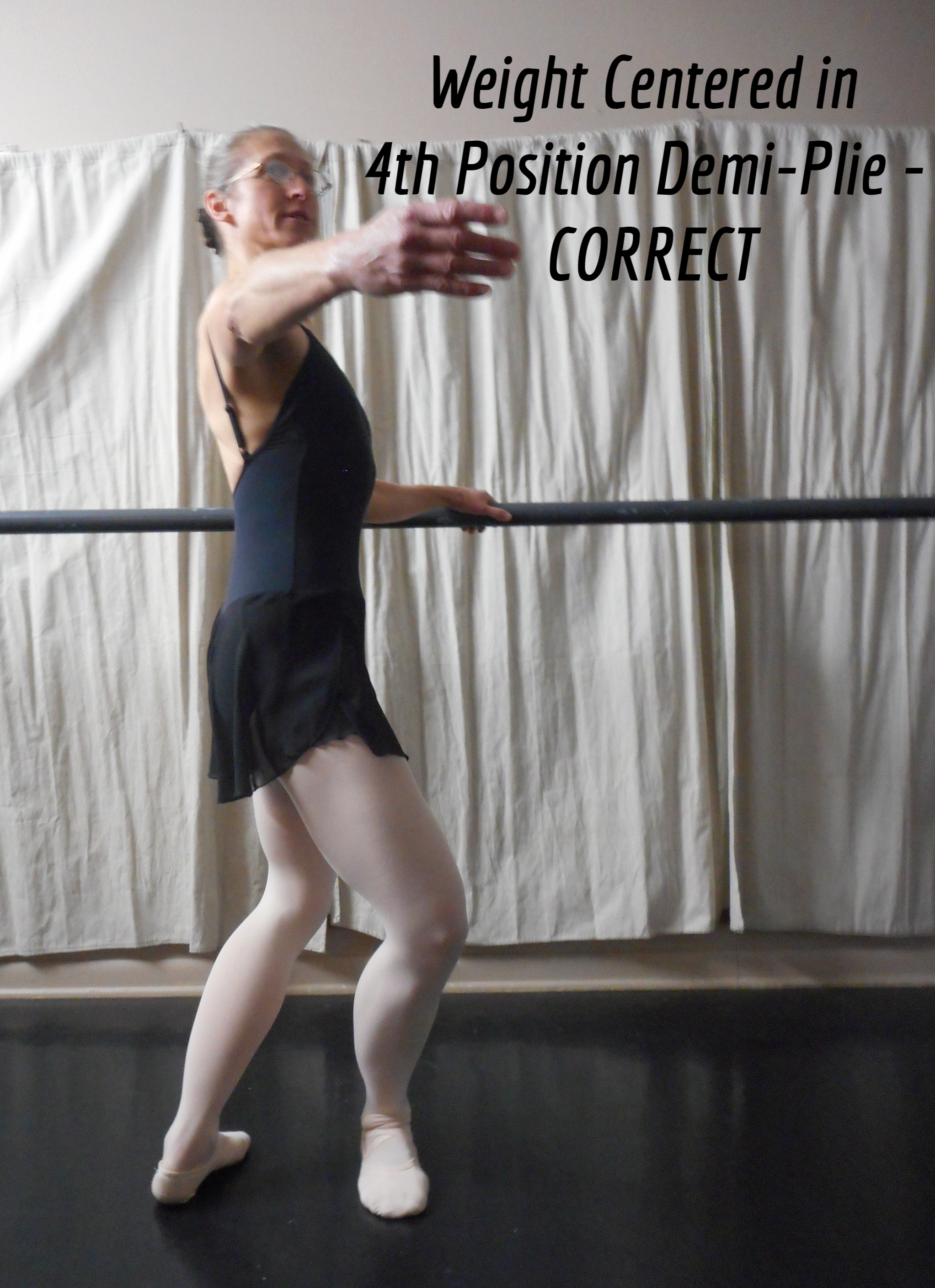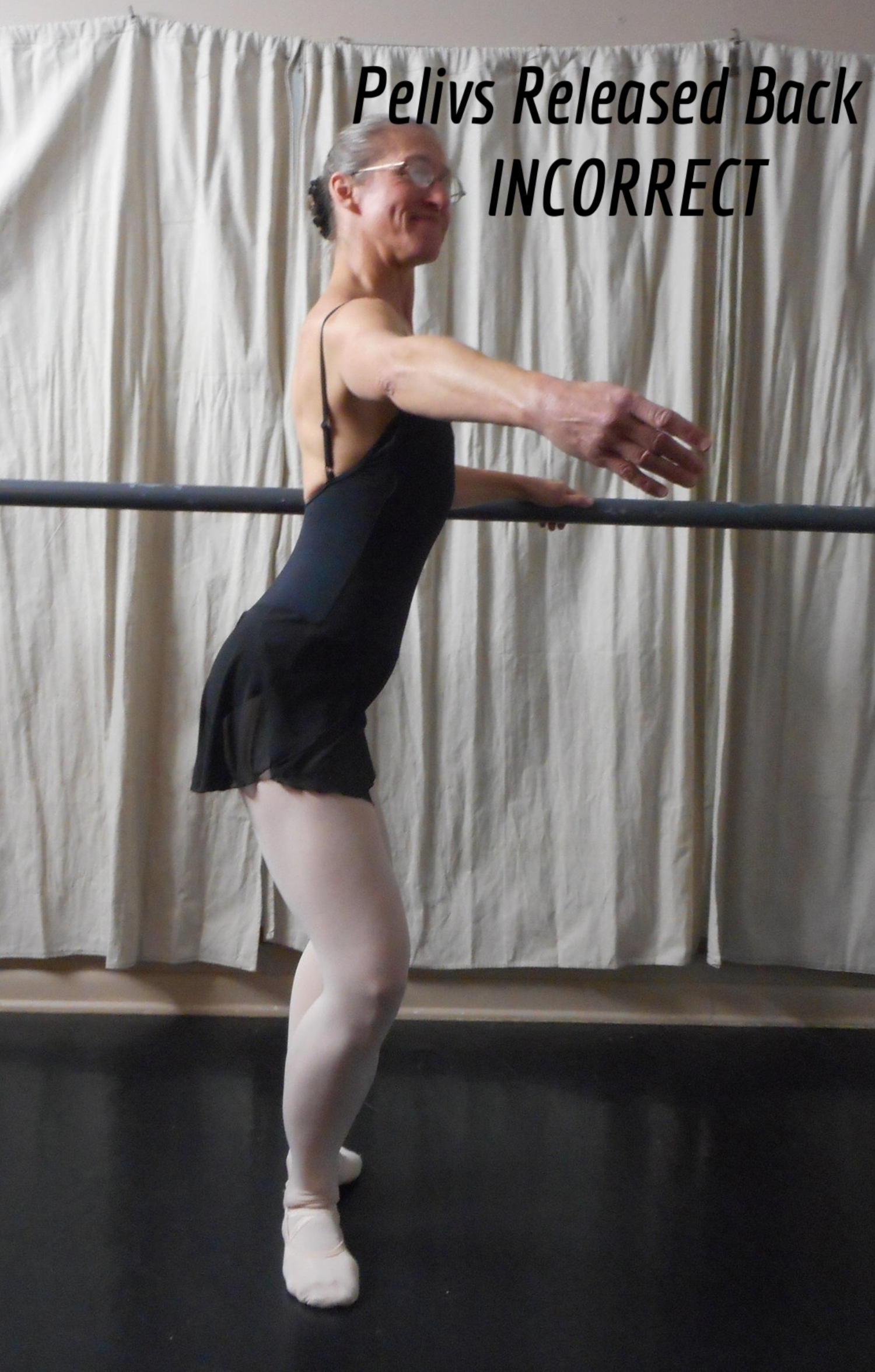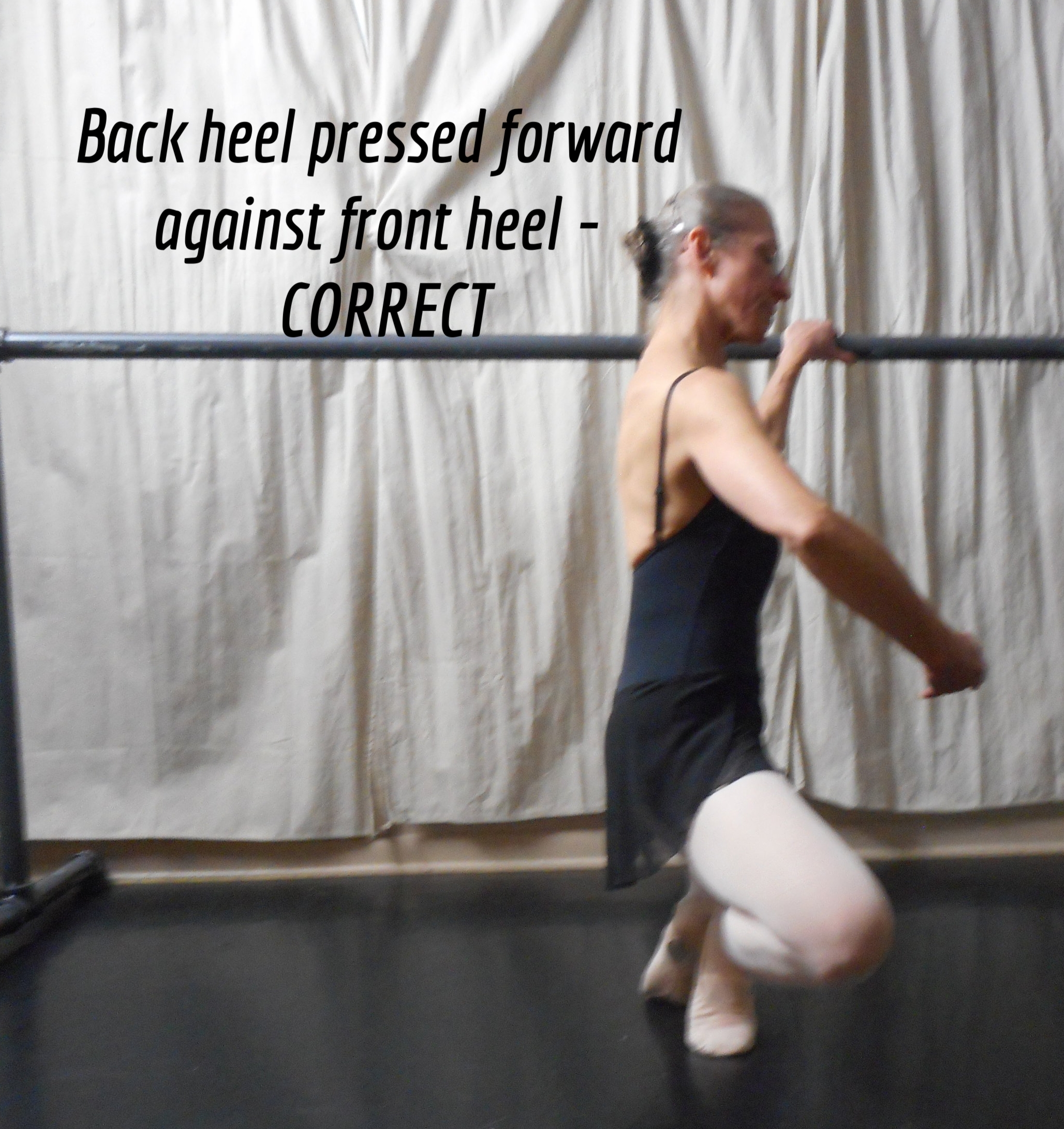The Ups and Downs of Demi and Grand Plies
Pliés are one of the most important movements in ballet – they appear virtually everywhere! The start and end of every jump, every turn, transitions from one position to another… A correctly executed plié can be a major player in the pursuit of a long, injury-free life of dancing. It is one of the first movements you learn in ballet, and one you will practice in its very own exercise towards the beginning of every class, no matter how advanced a level you attain. Its importance cannot be over-emphasized. Nor can the importance of doing your pliés correctly!
Let’s begin with demi-pliés. These are the “half bends” we do in all five foot positions, where the heels always remain connected to the floor. It is important here to focus on maintaining proper body alignment and not allowing the tailbone either to “tuck under” or to be released backward. The pelvis should remain in a neutral position under the shoulders, allowing for the gentle natural curve of the lower back to be retained. The front of the hip from thigh to low abdominals should be a straight line, not an acute or obtuse angle. The weight must remain equal on the two feet in every position – a more difficult task in 4th position than in the others.
Knees should be actively pressed open such that one feels turnout muscles engaging inside and around the hip joints. Failure to use the full degree of turnout in plié sets your body up for injury. Knees and ankle joints can find themselves without appropriate muscular support and misaligned into angles that can wear them down, put undue strain on tendons and ligaments and cause cartilage damage. Throughout the demi plié, all ten toes should have equal pressure into the floor such that the arches of the feet remain lifted.
The movement of a plié should be smooth and continuous, not choppy. When one reaches the bottom of the plié, the ascent should begin immediately. The timing of the descent and the ascent should generally be equal.
While the knees are descending into a plié, the dancer should feel that the body is being actively lifted upward and out of the hips, such that there is a constant feeling of lengthening even as the dancer is going lower. This has the effect of taking some of the feeling of heaviness out of the legs.
Now let’s address the more advanced movement of Grand Plié. This movement should not be introduced in young children’s classes until the students have fully mastered the demi plié as the grand plié requires a great deal more strength and body awareness and can be more harmful to the body than a demi plié if done incorrectly. If introduced carefully with proper instruction and with dancers facing the barre, an attentive teacher can safely teach the grand plié to older youth, young adults and very strong mid to older adults in a beginning class. Older adults who do not have a lot of muscular strength should not go far into a grand plié until they have developed greater strength and technique awareness. In some cases, they can be taught to go into a shallow grand plié with heels just barely off the floor, possibly deepening the movement gradually as they become stronger. Aside from keeping the heels on the floor, all of the above technique pointers given above for demi pliés hold true also for grand plié… and there are even more details to think about!
Grand pliés in 2nd position are the least strenuous for the body and present the least chance of causing injury if done incorrectly. In 2nd position, even in a grand plié, the heels remain connected to the floor. It is the only position in which this is the case. It is acceptable to let the feet be slightly wider apart in a 2nd position grand plié than in a demi plié, but they must be brought back in to their usual 2nd position distance (1 foot length apart) upon return from the bottom of the plié. In 2nd position grand plié it is important to work towards keeping the hips forward between the knees. This engages the full use of the turnout and there should be a feeling of a stretch on the front of the hip joint if done correctly. The hips at the bottom of the grand plié in 2nd position should be equal with the level of the knees. Under no circumstances should the hips go below the knees, although it may take some time before a beginning dancer has the strength to bring his/her hips down to knee level while maintaining the proper alignment through the spine and while keeping the hips forward with full use of turnout.
Grand pliés in 1st position present the next level of difficulty. In this position, the heels do leave the floor once the dancer has achieved the full depth of the proper demi plié. The heels are not forcibly pushed up, but rather are released from the ground as the plié deepens. They should never come further off the floor than necessary in the grand plié, and one should not find oneself in a virtual relevé at the bottom of the plié. During the portion of the plié when the heels are off the floor, body weight should be distributed between the first and second toes of both feet such that the heels are pressed forward, assisting in the maximization of the turnout. The dancer must be particularly vigilant to maintain correct body alignment as the plié deepens. The spine should remain on a vertical axis with no pitching forward of the shoulders, nor any tilting backwards or forwards in the pelvis. This requires a great deal of strength in the quadriceps and muscles surrounding the knee joints. The return from the bottom of the grand plié to the demi plié must be initiated by pressing the heels back towards the floor such that the full depth of the demi plié is achieved with heels reconnected to the floor before the knees stretch out of the plié altogether. The vertical axis of the spine must be maintained throughout. The bottom of a grand plié should never involve “sitting” at the bottom. The leg muscles must remain strongly engaged throughout the movement and the plie should involve continuous motion.
Grand pliés in 3rd and 5th positions are a step up in difficulty from those in 1st position because the base of support is smaller. All that is true about the technique of a grand plié in 1st position holds true for these positions as well. Additionally, the dancer must think about pressing the back heel forward while descending from the demi into the grand plié such that at the bottom, the heels of the two feet are touching one another. This helps to activate the full degree of turnout while also preventing the back foot from sickling.
Grand pliés in 4th position should be reserved for very strong and experienced dancers who have tremendous self-awareness and bodily control. While concentrating on all of the technique discussed for grand pliés in 1st, 3rd and 5th positions, the dancer working in 4th position must also maintain “square” shoulders and hips meaning that there is no twist in the body and that the shoulders and hip bones all equally face forward throughout the movement. Additionally, in 4th position, it is more difficult to maintain the turnout of the back leg, and care must be taken not to allow the back knee to “drop” inward. Both knees must be pressed actively open throughout the movement and hips must be aligned evenly between the two feet.
Phew! That’s a lot to think about for your first or second exercise of a ballet class! No wonder ballet is good for the brain as well as strengthening the body!!! And no wonder ballet can act as a sort of meditation while it takes your mind off everything else in life because it requires every ounce of concentration just to do every single movement! But don’t feel discouraged, eventually after enough practice most of it becomes second nature and you won’t have to think about every single detail anymore. Just remember how strong and beautiful your mind and body are growing as you enjoy the music and camaraderie of your classmates. Step up to the barre and into the meditative practice of your perfectly executed pliés. Let the music begin!
















